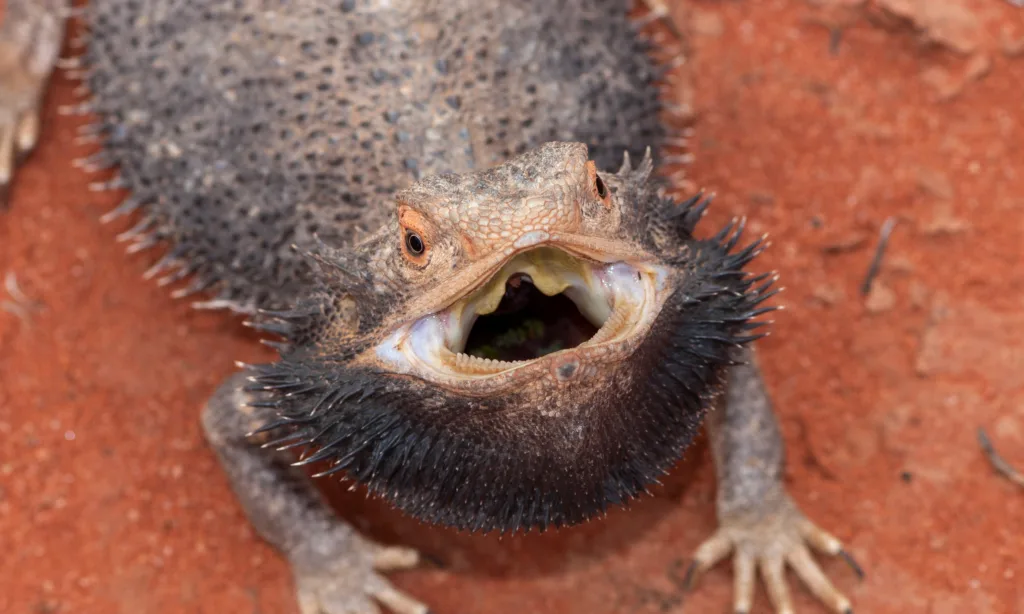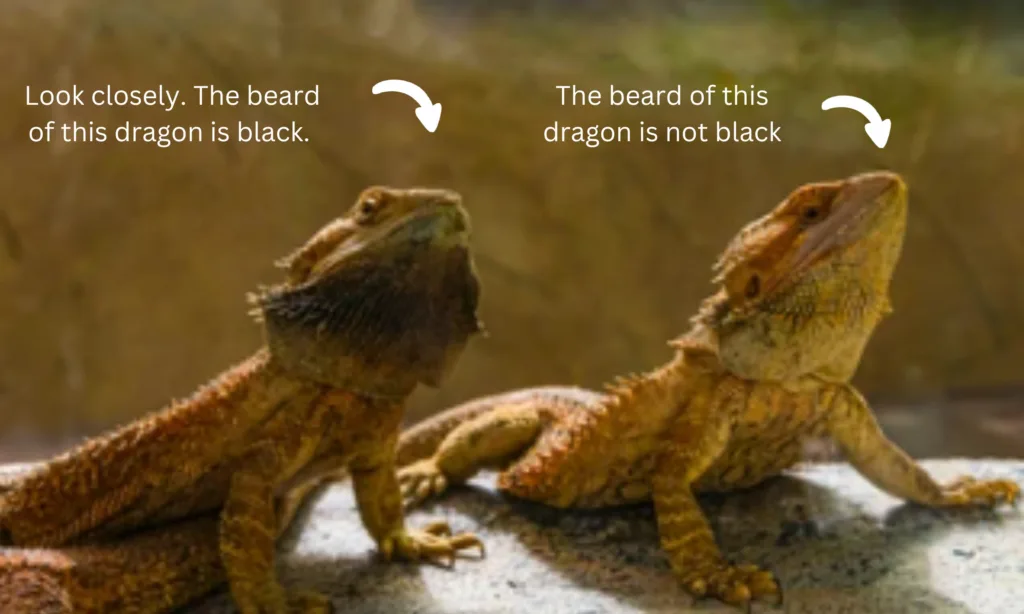So, you have just put food in front of your bearded dragon. But they aren’t eating it! Gasped… but why are they behaving like this? Well, that’s because your bearded dragon is sad. And unlike cats or dogs, your bearded dragon can’t make natural noises to tell you that they are sad. Fortunately, they show some signs that can tell you that they are sad.
1. Not Eating
Bearded dragons are voracious eaters – they love eating. Since they are omnivores, they enjoy both bugs and greens. However, some beardies can be a bit picky. They will always eat bugs. But there are ways to make them eat greens, such as making a salad of bugs and insects.
The problem arises when your bearded dragons are sad; they will stop eating, no matter what you give them to eat. Perhaps they will eat one or two bugs, but they will not eat as much as they do when they are healthy.
2. Not Moving
Undoubtedly, bearded dragons aren’t active animals. But they are not lazy animals either. When they are healthy and happy, they will bask, climb, and explore their environment. And if you don’t know how active they are when they are healthy and happy, just put some leash on them – not tight around their neck – and go for a walk. You’ll see excitement in their eyes. Their tail will rise – showing that they are alert.
Pro tip – if you want to enjoy some quality time with your bearded dragon, take them on a car trip. Just make sure you take all the precautions.
But when they are sad, they will stop moving. They won’t even do their favorite activities including basking, eating, and exploring. They will stay still at one spot in their tank. At times, you will also see them hiding. Keep in mind, bearded dragons hide for a variety of reasons.
3. Aggressive
Bearded dragons are aggressive is one of those myths that we are tried of debunking. In reality, bearded dragons are pretty docile and beginner-friendly reptiles. The good thing is they are easy to tame as well. Keep in mind that if you buy a bearded dragon from pet stores, you don’t need to tame them. They are already acclimated to human presence. But if you rescue your bearded dragon, you have to tame them.
But the problem is, even if your bearded dragon is tamed, when they are sad, they become aggressive. And beware, they bite as well. Their bites aren’t as hurtful as a snake bite, but they do hurt. So, if you see them head bobbing, hissing, fluffing their beard, twitching their tail, or mouth gaping, stay at a distance. Even better, give them some time to calm down for a few minutes and then hold them in a correct way – put your pointer and thumb below their neck and belly. The rest of the fingers should support their body.

4. Stress Marks
Bearded dragons come in a variety of colors: red, gray, brown, and yellow. But when they are sad, no matter what color they are, their beard becomes black. At times, you will also find some dark lines or spots on their chin, neck, and belly. Another time your bearded dragon will get stress marks is when they are growing and shedding. Don’t forget to give your vet a call if neither of these is an issue. But despite that, your bearded dragon is having stress marks.

5. Not Basking
Bearded dragons love basking. They bask to regulate their temperature and metabolism. And while there are no fixed hours in which they bask, some beardies bask for 10 hours while others only bask for 5 hours. We have both type of beardies – some prefer to bask in the morning while others in the afternoon. And keep in mind this isn’t anything to be worried about. As long as your beardie is basking. But when beardies stop basking, that’s where the problem starts. It’s an indication that they are sad. Something is bothering them. They are stressed.
And this sign of sadness shouldn’t be ignored because bearded dragons bask to digest and absorb their food. In the long run, this can make your bearded dragon sick.
6. Trying to Hide
Bearded dragons hide for a variety of reasons. They hide when they want to cool down and feel secure. They also hide to protect themselves from predators. Another reason your bearded dragon is hiding is that they are stressed or sad.
7. Bathroom Problems
Whatever your beardie eats, the color of their poop will be that color. If your bearded dragon eats greens, their poop will be dark green in color. However, when bearded dragons are sad and don’t eat, they will have difficulty pooping. Though bathing helps during constipation, that’s not a permanent solution. You have to call a vet for this purpose. And make sure that you are not sitting on the fence at this time. If constipation persists, bearded dragons can have impaction – a condition in which their digestive tract prevents the passing of feces. This can become fatal in the long run.
8. Changing Color
When bearded dragons are sad, they become dull or turn black. A happy and healthy bearded dragon will have a light, warm hue. However, a sad bearded dragon will become dark. Additionally, bearded dragons may change their color to red, but this is also not a good sign. They can turn red due to injury or infection. Constriction can also occur during shedding. Consequently, there may be constriction in their normal blood flow.
9. Problems in Breathing
Bearded dragons can also become sad when they are sick, just like us humans. They tend to become sadder when they have respiratory infections. This happens when there is bacteria growing in their lungs. Consequently, your bearded dragon will breathe heavily. They may also make a low-pitched clicking sound. At times, you will see some fluid coming out of their mouth and nose.
10. Unusual Postures
When bearded dragons are suffering from metabolic bone disease, they hunch. This is because this disease makes their legs weak. And that’s why when they stand, they stand with their bellies touching the ground. If they are looking straight up or star gazing, that means they are having difficulty breathing. Now, if they are not using their front legs, this means these legs are paralyzed. Impaction is what also leads to paralysis in their legs. At times, their head will be moved to the right as if it’s frozen.


6 comments
[…] that much, but when they’re sick, they get even more lethargic. Lack of energy can make them sad. So make sure you cheer up your bearded dragon by giving them their favorite treats – […]
[…] don’t eat rosemary, don’t force it. You don’t want to make your bearded dragon sad, do […]
[…] Depression […]
[…] metabolism. It is also seen uplifting your beardies mood. So, if your bearded dragon is feeling sad, consider giving them […]
[…] the initial days, due to the new environment, your bearded dragon may be stressed. In turn, you’ll find their beard black. But don’t let this scare you away. After 2 and 4 days […]
[…] As long as you keep everything simple, it will be fine. When you overcrowd their terrarium, your bearded dragon will become stressed and sad. […]